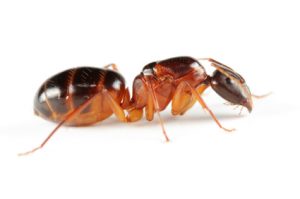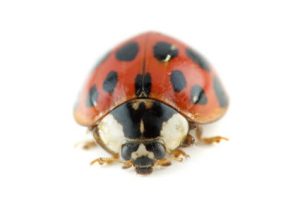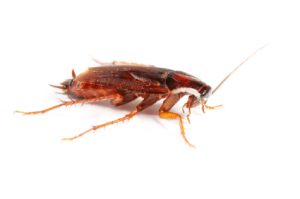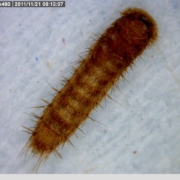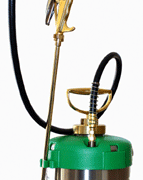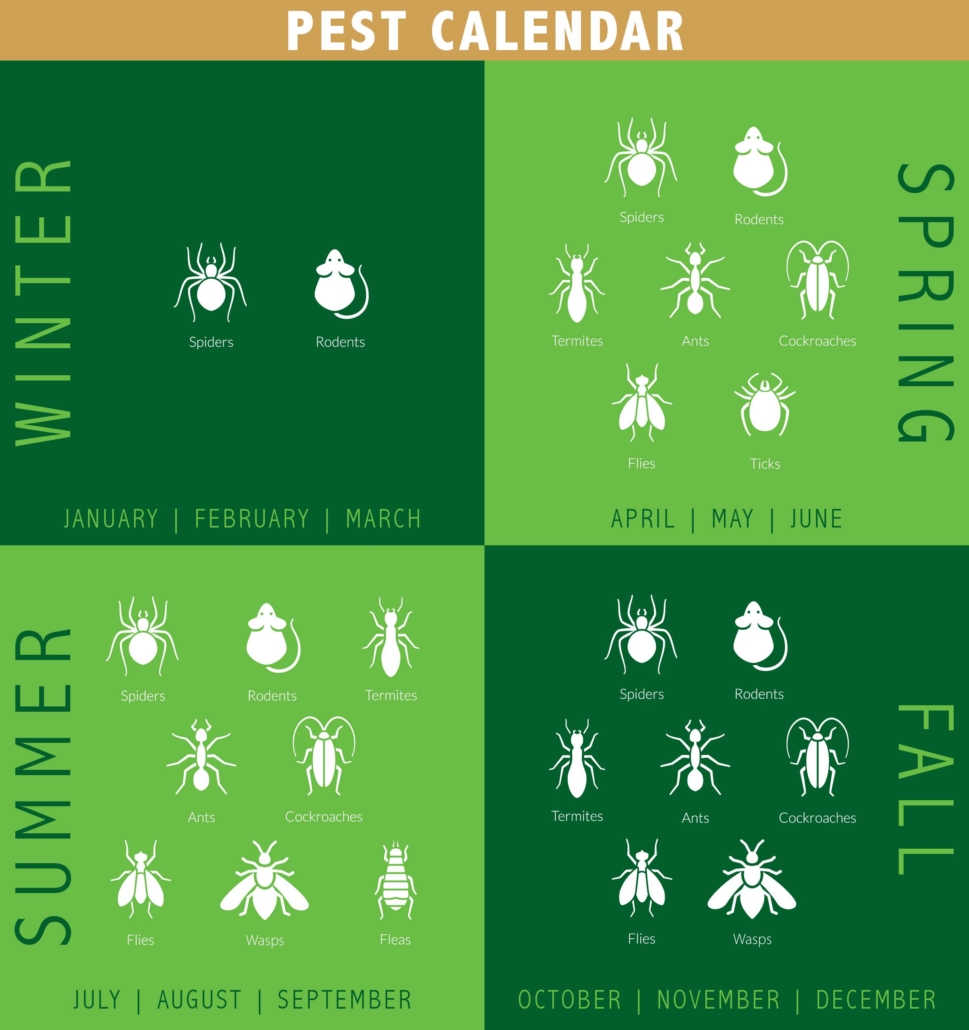You have a pest problem.
We are here to solve it.
Integrated Pest Management is the combination of different techniques and strategies to control pests. It is a systems approach to pest control that does not rely on automatic or calendar based applications of pesticides. The components are inspect, identify, and communicate to understand pest tolerance and control needs. Next we correct conducive conditions and cultural practices that encourage pest pressure. Then we utilize correct control methods like trapping and pesticide application. Finally we monitor and evaluate the impact of the measures taken and make adjustments to continue to control pest issues.
Inspection, Identification and Communication.
Pest control starts with identification of the target pest or pests. To identify you need to have a sample. It seems simple but correct identification can be
challenging. The first step is getting a sample or photograph. If the pest is not available, droppings, fur, exoskeleton or any parts of the pest can be used to identify it. Our Associate Certified Entomologist can make sure we identify the pest correctly.
Identification of pest issues happens as part of an inspection and communication with a customer. The inspection is to find pest issues, understand the site and issues that create pest pressure, and most important understand the customers needs. The customer defines the pest and the action threshold which is the level of pests they can tolerate before taking action. One fly in the game room of a pool house in a residential apartment complex is acceptable, but one fly in a hospital emergency room is not acceptable. Some sites prefer clover in a lawn and others want no clover.
Pest Management Techniques and Strategies
Successful pest control will correct underlying issues before and in conjunction with control applications. First step is make environmental changes to contributing (also known as conducive) conditions and cultural norms. Physical trapping or removal of pests, environmental changes and exclusion are examples of strategies that are combined with pesticide application to successfully solve pest problems.
Change Contributing Conditions
Pest activity depends on the right resources available for the pest to survive and thrive. Making changes to the pest’s environment and resources makes the pest less successful. For example, mosquitoes eggs being laid in a bucket or water and larva pupating from the bucket increase the mosquito population. Turn over the bucket and the eggs, larva and pupa are dead and water won’t collect to allow other adult mosquitoes to lay eggs in. Another example is flies inside a garage in the summer. Place lids on the trash cans to keep flies from laying eggs in the trash and the fly issue is reduced. Raising the mowing height to reduce crabgrass is another example.
Contributing conditions are also known as conducive conditions. Conditions conducive to pests are access to food, water and shelter. Our landscapes and
structures provide all three. We refer to them on our service and inspection reports as observations. The steps necessary to correct the conducive conditions observed are called recommendations. The recommendations may be things we do, like filling a gap at the air conditioner line, or something we need you to do (or hire someone to do), like clean the gutters.
To limit access to food, the types of food the pest feeds on needs to be contained if possible. Obviously it’s impossible to remove the food preferred by termites, wood, from a New England structure. However, for fly control, removing wet organic matter is normally possible. Water will also be available in gutters (hopefully flowing water in clean gutters). Removing water from the air in the basement or crawl space with a dehumidifier is possible.
Exclusion
Blocking how pests get in is possible-depending on the pest. Termites can enter a gap 1/64th of an inch wide. This is the thickness of a piece of paper. With an insect that small exclusion is not possible. At the other extreme rats need an opening the size of a quarter and daily access to water. Excluding for rats is possible using appropriate materials like hardware cloth. Exclusion materials for pest control are caulking and polyurethane for many areas and metal like copper mesh or stainless steel for other openings. When excluding around metal it is important not to use other metals that are different. Copper is fine to use around copper pipe, but not around iron pipe.
Trapping and Removal
Trapping and removal can be done with an variety of devices. There are a large number and wide variety of traps available. Traps include mouse traps or insect monitors. Traps for insects often have attractants called pheromones on them. Do not use traps with pheromones as simple monitoring traps if there is no pest issue to avoid attracting insects into an area they may not already be in. Removal can be done by hand, or with brushes, brooms or a vacuum.
Chemical Control
Pest control applications are a part of integrated pest management. Selecting the least toxic material and applying when the timing is right for control. Pesticides have a wide variety of formulation and application methods. Lawn applications can be granule or liquid. Tree applications can be sprayed on the leaf tissue, on the bark, or injected into the bark. Structural applications may be baits or dusts in wall voids, or foundation spray applications or sub soil injection. Our effective integrated pest management solutions select the best efficacy with the lowest risk applied at the correct time to provide control. Pesticides are selected that have the lowest risk and environmental impact. They are placed only in the areas they will impact the target pest with the least risk to non targets.
Monitor and Evaluate
Ongoing monitoring and evaluation of pest issues will lead to changes and adjustments in the pest control program to make sure it effectively prevents and resolves issues. The final step is very similar to the first step of integrated pest management. It goes back to monitor, evaluate, identify and communicate with you, the customer.







